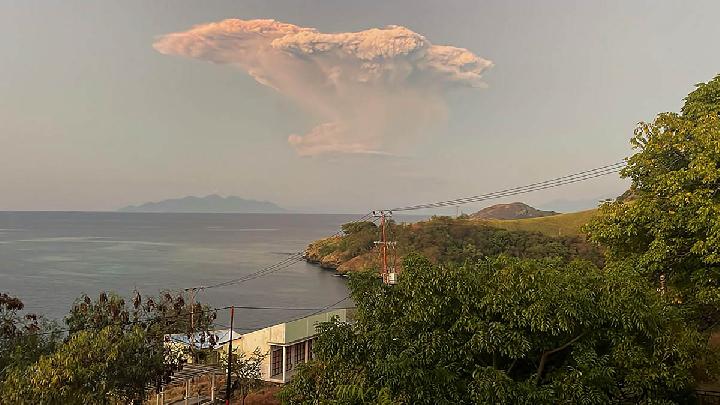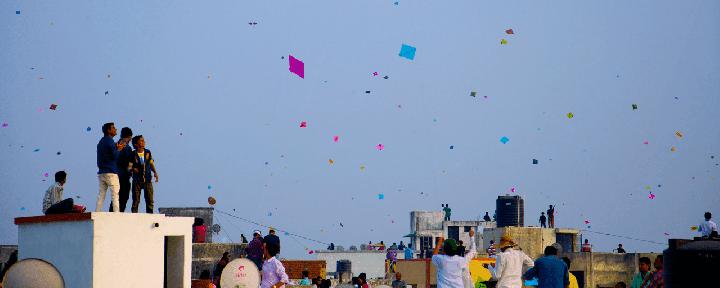TEMPO.CO, Jakarta - The Indonesian Biodiversity Strategy and Action Plan (IBSAP) 2025-2045 document mentions that Indonesia is home to 1,883 bird species, equivalent to 18.6 percent of the total bird species in the world.
The document also states that the diversity of these ecosystems can provide habitat, natural food sources, water sources, roosting trees, and nesting trees for bird fauna. This condition is one of the vital factors for the survival of various bird species, both resident and migratory birds.
One of the important habitats for the survival of wild birds on the island of Sumatra is the Giam Siak Kecil-Bukit Batu Biosphere Reserve (GSK-BB), in the province of Riau. Results compiled from several studies conducted since 2011 by researchers from the Indonesian Institute of Sciences (LIPI) indicate that there are at least 199 bird species living in the natural landscape designated as one of the biosphere reserves in Indonesia by UNESCO in 2009.
Located within the core zone of the GSK-BB Biosphere Reserve is the Humus Research Station, a laboratory jointly managed by the Belantara Foundation and the APP Group. This 2,000-hectare secondary peat swamp forest area is designated for researchers and academics interested in studying the ecosystem and biodiversity of the peat swamp forest.
From February 7-14, 2025, the research team from the Belantara Foundation, in collaboration with the National Research and Innovation Agency (BRIN), Pakuan University, and Andalas University, conducted a study on the diversity of bird fauna in the transitional area between natural forest and plantation forest at the Humus Research Station in the GSK-BB Biosphere Reserve.
One of the research team members, Dolly Priatna, stated that in addition to observing the edge effects and relationships between natural forest and plantation forest habitats for the bird fauna community, this activity also aimed to update the data on bird species in the GSK-BB Biosphere Reserve, particularly at the Humus Research Station.
"Bird fauna plays a crucial role in the sustainability of an ecosystem as they can aid in seed dispersal from various types of forest trees, and function as biological control for agricultural pests," said Dolly, who is also the Executive Director of the Belantara Foundation, in a written statement on Sunday, March 23, 2025. "In addition, birds can serve as indicators of the quality of an environment (bioindicators)," she said.
Senior bird researcher from Andalas University, Wilson Novarino, mentioned that an inventory of bird species in the natural forest zone (HA), plantation forest zone (HT), and transitional zone between HA and HT using the Point Count and mist net methods revealed 87 bird species.
Based on their conservation status, there are 14 bird species classified as protected under the Indonesian Ministry of Environment and Forestry Regulation No.106 of 2018 concerning Protected Plant and Animal Species.
The bird species are: lesser adjutant (Ardea sumatrana); black-thighed falconet (Microhierax fringillarius); long-tailed parakeet (Psittacula longicauda); blue-crowned hanging-parrot (Loriculus galgulus); wrinkled hornbill (Rhabdotorrhinus corrugatus); rhinoceros hornbill (Buceros rhinoceros); black hornbill (Anthracoceros malayanus); sumatran ground cuckoo (Calorhamphus hayii); fantail (Rhipidura javanica); hill myna (Gracula religiosa); red-naped trogon (Harpactes orrhophaeus); crimson sunbird (Aethopyga siparaja); bushy-crested hornbill (Anorrhinus galeritus); and changeable hawk-eagle (Nissaetus cirrhatus).
Regarding their threat status, Wilson stated that one bird species, the wrinkled hornbill (Rhabdotorrhinus corrugatus), is classified as Endangered (EN) and facing the threat of extinction according to the International Union for Conservation of Nature (IUCN) Red List.
"There are six bird species, including the long-tailed parakeet (Psittacula longicauda), black-capped kingfisher (Halcyon pileata), wrinkled hornbill (Rhabdotorrhinus corrugatus), black hornbill (Anthracoceros malayanus), red-naped trogon (Harpactes orrhophaeus), and javan white-eye (Zosterops melanurus), categorized as Vulnerable (VU) to extinction," said Wilson.
In addition, Wilson mentioned that there are six bird species classified as Near Threatened (NT), including the black-thighed falconet (Microhierax fringillarius), bar-winged prinia (Prinia familiaris), common iora (Aegithina viridissima), bushy-crested hornbill (Anorrhinus galeritus), Sunda pitta (Pitta megarhyncha), and banded broadbill (Eurylaimus ochromalus).
Based on their international trade status under CITES (Convention on International Trade in Endangered Species of Wild Fauna and Flora), nine bird species are listed under Appendix II. This category includes species not threatened with extinction, but whose trade must be controlled to prevent their extinction.
The bird species listed under Appendix II are: black-thighed falconet (Microhierax fringillarius); long-tailed parakeet (Psittacula longicauda); blue-crowned hanging-parrot (Loriculus galgulus); wrinkled hornbill (Rhabdotorrhinus corrugatus); rhinoceros hornbill (Buceros rhinoceros); black hornbill (Anthracoceros malayanus); hill myna (Gracula religiosa); bushy-crested hornbill (Anorrhinus galeritus); and changeable hawk-eagle (Nissaetus cirrhatus).
Wilson added that five migratory bird species were identified, including the blue-tailed bee-eater (Merops philippinus), tiger shrike (Lanius tigrinus), black baza (Aviceda leuphotes), black-capped kingfisher (Halcyon pileata), and Asian brown flycatcher (Muscicapa dauurica). "The GSK-BB Biosphere Reserve serves as an essential natural habitat, a stopover site, a foraging place, and a resting area for various migratory bird species during the northern hemisphere's winter season," he said.
Senior ecological researcher from the National Research and Innovation Agency (BRIN), Adi Susilo, emphasized the importance of preserving the integrity of natural forest blocks within plantation forest areas as they can serve as stepping stones for bird species with wide ranges. "The natural forest blocks within the plantation forests have the potential to enhance bird fauna diversity in the area," he said.
Editor's Choice: Visiting Grimsey Island, A Paradise of Birds with 20 Inhabitants
Click here to get the latest news updates from Tempo on Google News


















































